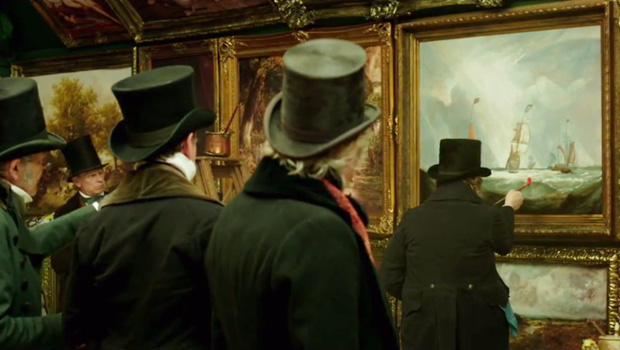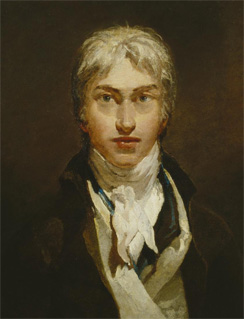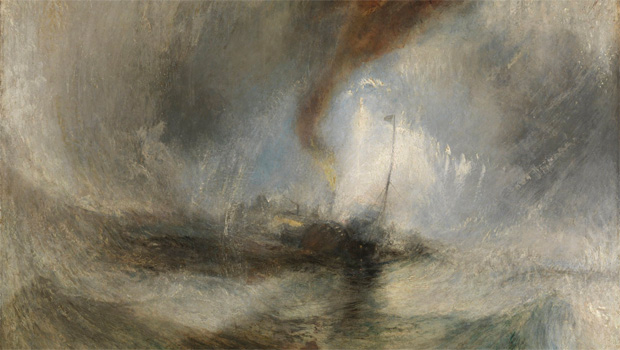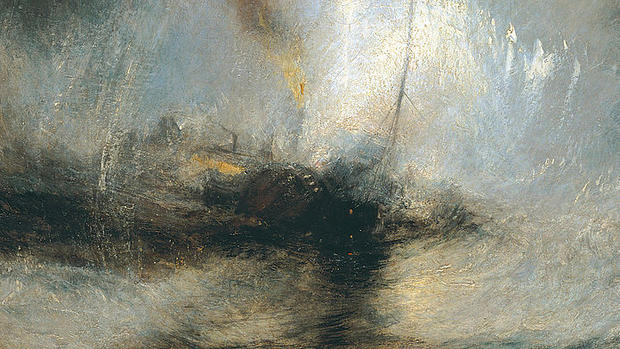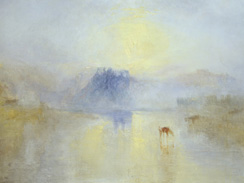The elements of J.M.W. Turner
Our first impressions of people and things don't always hold up well. Consider how the British art world first reacted to the paintings of J.M.W. Turner. Martha Teichner guides us through his life and works:
J.M.W. Turner loved showing off. The recent film, "Mr. Turner," captures his famous habit of sweeping into London's Royal Academy on what were called "Varnishing Days," when painters put finishing touches on their submissions for the annual show.
Then, ignoring taunts, with a single, theatrical flourish, he would demonstrate the genius that made him possibly Britain's greatest painter ever.
"Once I started to investigate Turner the personality -- complex, contradictory, eccentric personality -- and then related that to these extraordinary, sublime paintings, I just felt, you know, there was a film in it," said Mike Leigh, who wrote and directed "Mr. Turner."
"He is an enigma. He's a bundle of contradictions."
Joseph Mallord William Turner was a cockney and never tried to hide it, even around his posh patrons. His father was a barber; his mother died in an insane asylum.
At the age of 24, in 1799, he painted this self-portrait (left).
But it was his landscapes which made him famous and rich -- landscapes and seascapes that (in the last years of his life especially) were as radical, as intense and strange as the man himself.
Julian Brooks, of the J. Paul Getty Museum, is co-curator of a Turner exhibition now at the de Young Museum in San Francisco. He showed Teichner Turner's "Snow Storm: Steam-Boat off a Harbour's Mouth" (1842), "the most extraordinary depiction of a storm. Turner's contemporaries would never have seen a painting like this before," he said.
"It's a blur, and that's the power of it. We know that's what storms are like, and that's what Turner wanted to make us understand as the viewer."
Brooks said it was crucial that a steamboat was depicted in the midst of the storm. "Because, you know, steam power was the invincible new technology. But Turner, instead of sort of celebrating the technology, he makes it clear that the boat is nothing compared to the power of the sea."
For this painting, Turner said he wanted to see the storm from on board the ship, so he asked the sailors to tie him to the mast.
"Turner was obsessed by the elements, by water, fire, air," said Brooks. "That he could use these within a canvas to generate the atmosphere and the feeling that he wanted, for Turner it's a lot about feeling and not just describing something."
So his Venice was dreamy, flooded with sunlight ...
"Turner transformed Venice into this sort of magical, ghostly city," said Brooks. "It's all about atmosphere and about effects of light and water and the way the two work together." But one can't tell where the building ends and the water begins.
His technique could be breathtakingly delicate, or just as breathtakingly unconventional. As the film shows, the critics had a field day.
"His later work was met with scathing reaction from all kinds of people, including Queen Victoria," said Leigh. "Because they didn't get it. He was ahead of his time."
People thought Turner has taken leave of his senses, talking about his canvases of "eggs and spinach."
By the time he reached 60, in 1835, Turner didn't care what people thought. He was considered odd, and secretive. He never married but apparently fathered two daughters. And for years he lived a double life.
On his many painting and sketching expeditions to the seaside town of Margate, he repeatedly rented a room with a view from Sophia Booth. They lived together as lovers after her husband died.
"None of the neighbors knew who he was," said Brooks. "They thought he was a retired seaman, Admiral Booth. They called him a nickname, 'Puggy' Booth."
This painting of a castle in England at sunrise (left) was one of nearly 200 works found in Turner's studio when he died in 1851 at 76. Then, it would have seemed unfinished, confusing. But to modern eyes, it's been an inspiration to artists ever since.
"All the forms are abstracted into just color and light," said Brooks. "This is a touchstone from Turner's late work that contemporary artists and artists after him look to.
"It is, in a way, Impressionism before Impressionism came into being."
Turner had no doubt that he was the great British painter of his time. He turned down a collector who offered to buy everything in his home gallery, saying he intended his work to be a gift to the British nation. The self-indulgent act of a huge ego? Maybe. But the collection is now considered a priceless treasure.
History has judged that Turner was right.
- NYFF review: The fiery firmament of "Mr. Turner" (CBS News)
- Timothy Spall, "Mr. Turner," wins Best Actor at Cannes (CBS News)
- GALLERY: Fire, sea, storms: The art of J.M.W. Turner
For more info:
- "J.M.W. Turner: Painting Set Free" at the de Young Fine Arts Museum of San Francisco, through Sept. 20 | About the exhibit | Exhibition catalogue (Hardcover)
- "Mr. Turner" (Official website); Available on DVD and Blu-ray, and on Digital Download via Amazon, iTunes and Vudu

